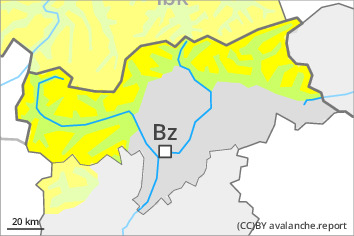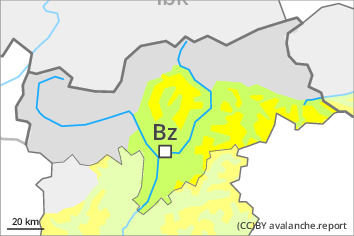
Danger level
 | 2000m |
|  |
|  | ||||
|  |
|  |

Weakly bonded old snow represents the main danger. Fresh wind slabs require caution.
Weak layers in the old snowpack can still be released by individual winter sport participants. The avalanche prone locations are to be found in particular on steep west, north and east facing slopes above approximately 2000 m. Caution is to be exercised in particular in shady places that are protected from the wind. Whumpfing sounds and the formation of shooting cracks when stepping on the snowpack indicate the danger. Avalanches can reach medium size. In the regions neighbouring those that are subject to danger level 3 (considerable) the avalanche danger is higher.
As a consequence of a moderate to strong wind from westerly directions, sometimes easily released wind slabs will form on Wednesday in particular adjacent to ridgelines and in gullies and bowls as well as at elevated altitudes. The avalanche prone locations are barely recognisable because of the poor visibility.
Defensive route selection is recommended.
Snowpack
dp.1: deep persistent weak layer
dp.6: cold, loose snow and wind
Towards its base, the snowpack is faceted and weak, especially on steep west, north and east facing slopes above approximately 2000 m, as well as on steep sunny slopes in high Alpine regions. Field observations and stability tests confirm the existence of a weak snowack.
On Wednesday the wind will be moderate to strong in some regions. The wind will transport the loosely bonded old snow. The barely recognisable wind slabs will be deposited on the unfavourable surface of an old snowpack, in particular in shady places that are protected from the wind.
Tendency
The old snowpack remains prone to triggering on shady slopes. Wind slabs must be evaluated with care and prudence.



